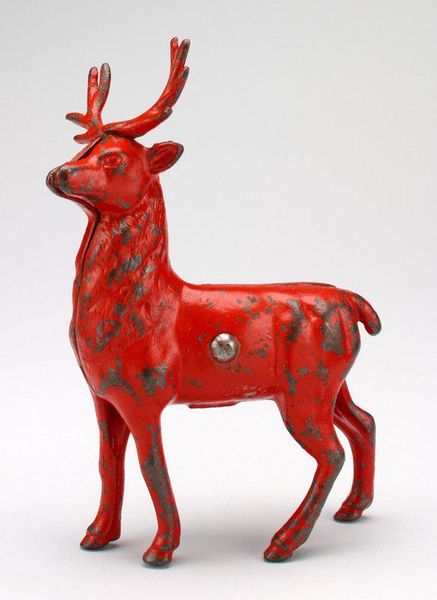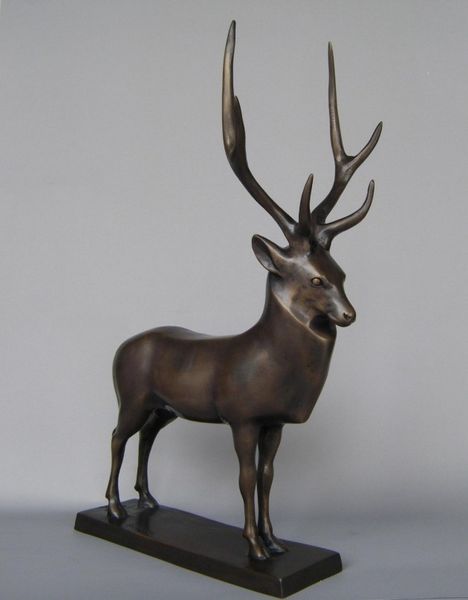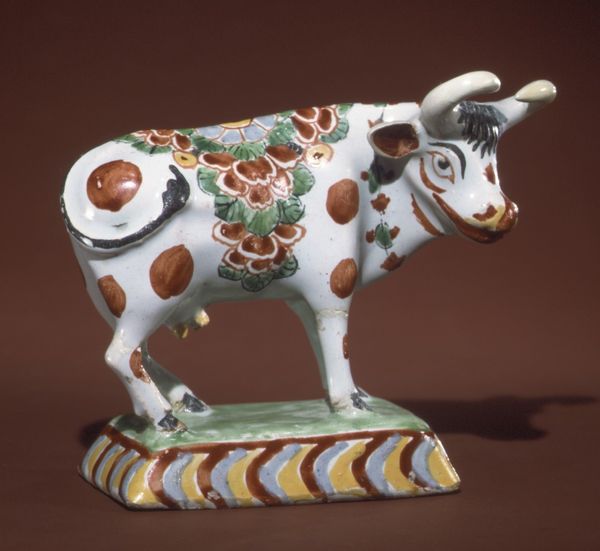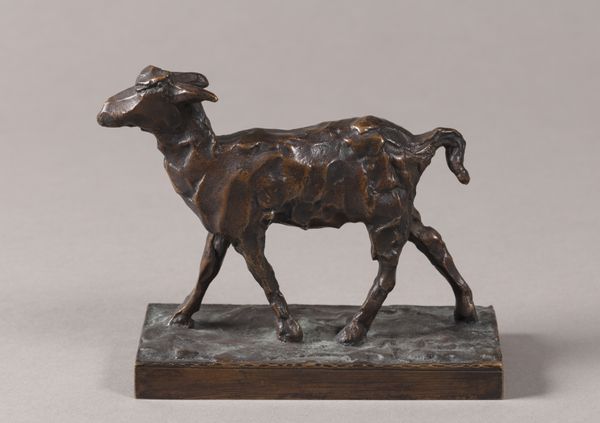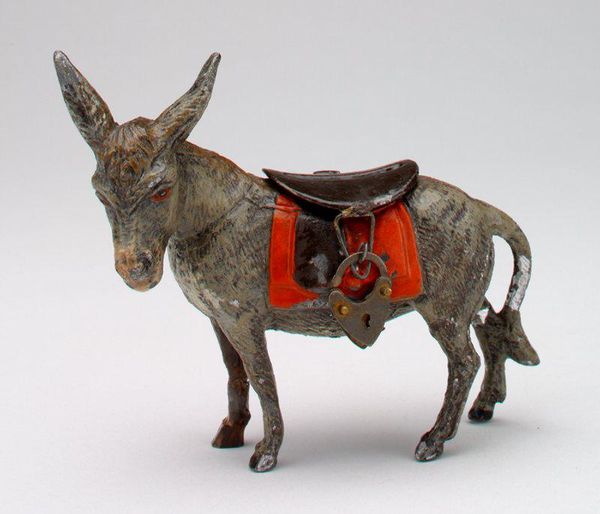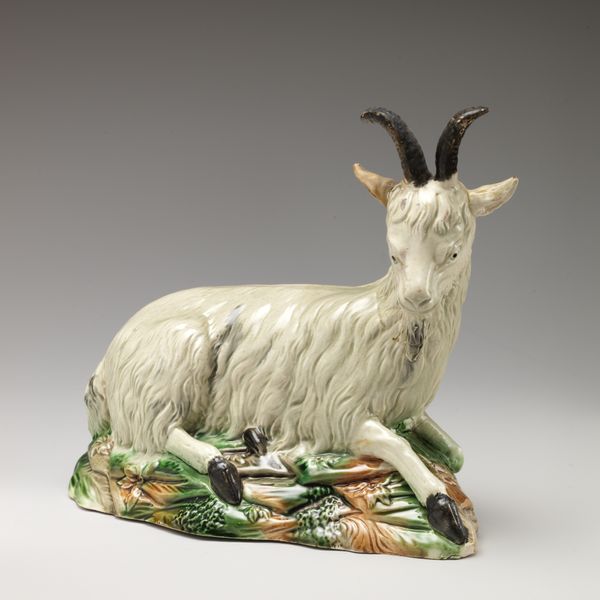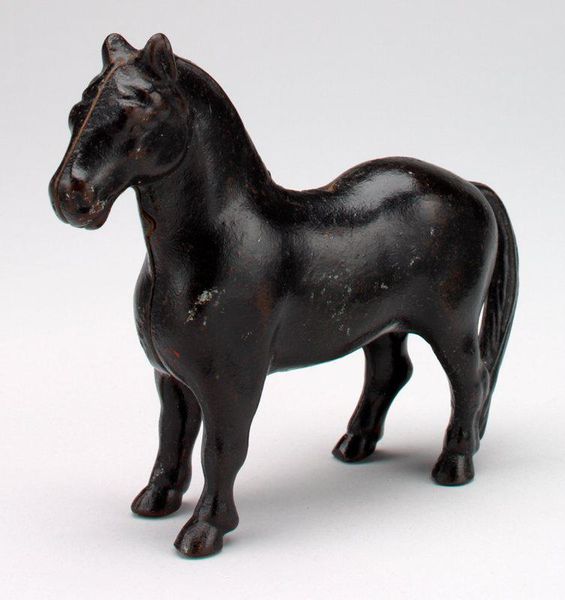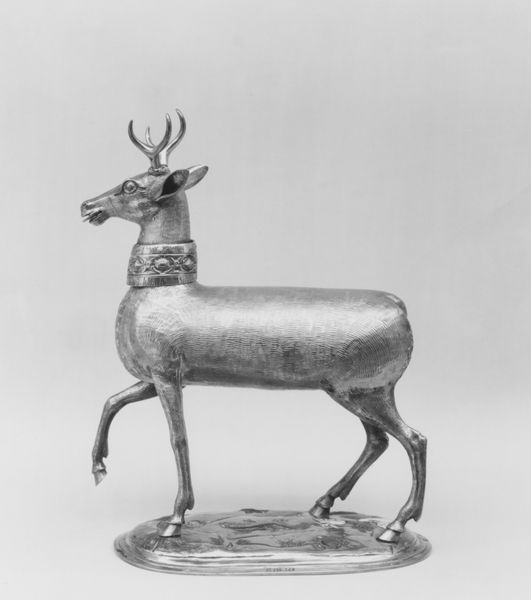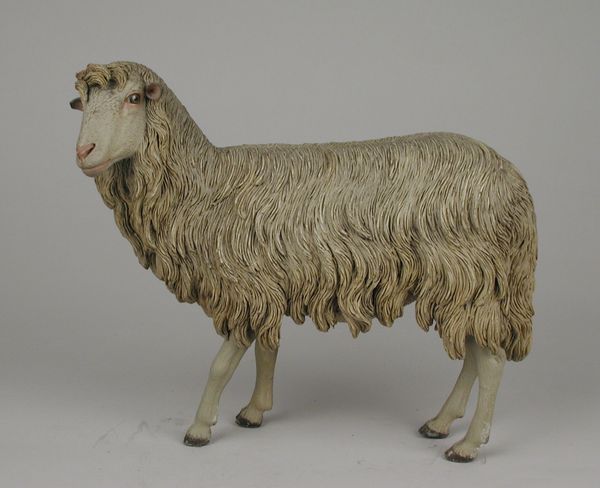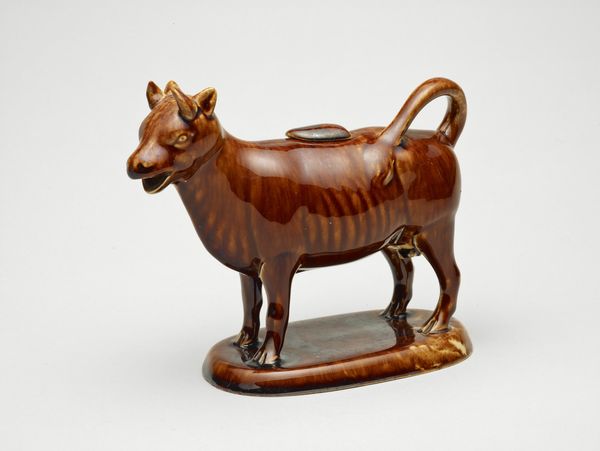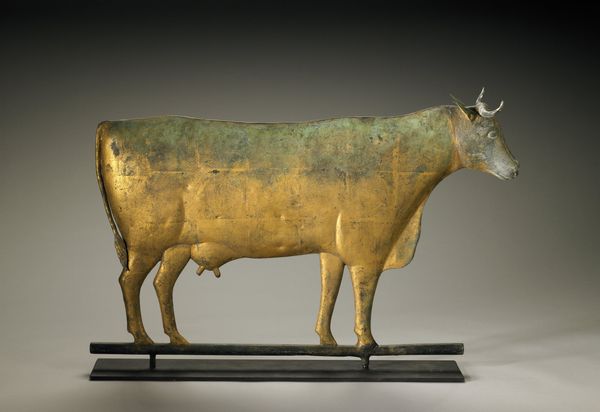
sculpture, wood
#
sculpture
#
figuration
#
sculpture
#
wood
#
decorative-art
#
realism
Dimensions: H. 8 1/2 in. (21.6 cm.); Gr. L. 9 in. (22.9 cm.)
Copyright: Public Domain
Editor: We're looking at "Young Bull," a wooden sculpture dating from the 18th or 19th century, currently housed at The Met. It’s remarkably lifelike. What societal factors were at play that led to creating this kind of representational artwork? Curator: It’s fascinating, isn't it? Consider the context. Decorative arts, like this bull, often served purposes beyond pure aesthetics. Was this perhaps a status symbol? Wealthy landowners might have commissioned such sculptures to reflect their agricultural holdings, asserting social and economic power through idealized portrayals of livestock. Editor: So, the "realism" aspect highlights something bigger? It's less about artistic expression and more about reflecting—or perhaps projecting—a specific social image. Curator: Precisely. Think about the museum context too. How does displaying an object like this, taken out of its original domestic setting, change its meaning? What narrative is The Met, as an institution, constructing by placing this bull on display? Editor: That’s interesting; I hadn't considered the museum's role in shaping our perception. Curator: Furthermore, does the detail and care suggest an emerging concept of "art for art's sake", a precursor of how animaliers such as Rosa Bonheur would approach the subject a century later, removed from a context of pure function? Editor: Now I’m seeing it in a different light, almost like a commentary on rural life that was, even then, being viewed through the lens of sentimental memory. Thank you. Curator: Indeed. The placement and interpretation of objects change over time, reflecting evolving values. Food for thought!
Comments
No comments
Be the first to comment and join the conversation on the ultimate creative platform.

